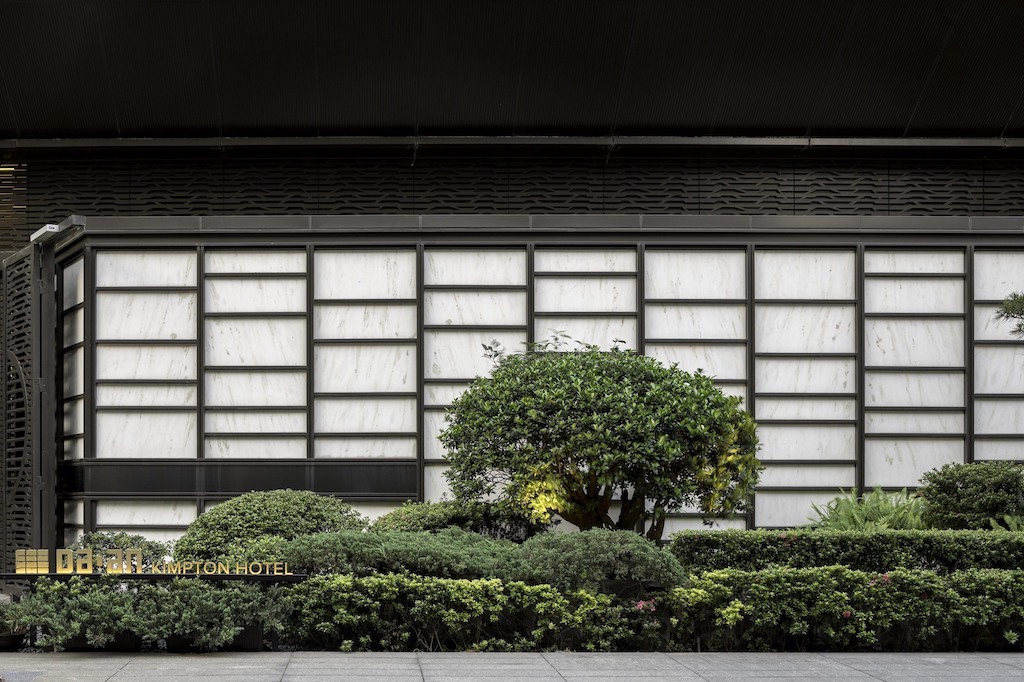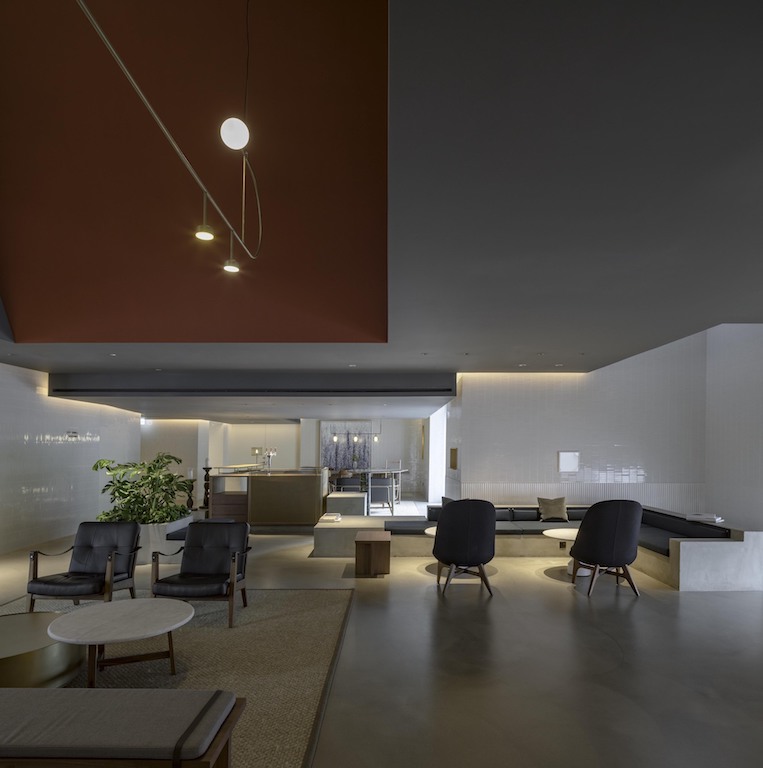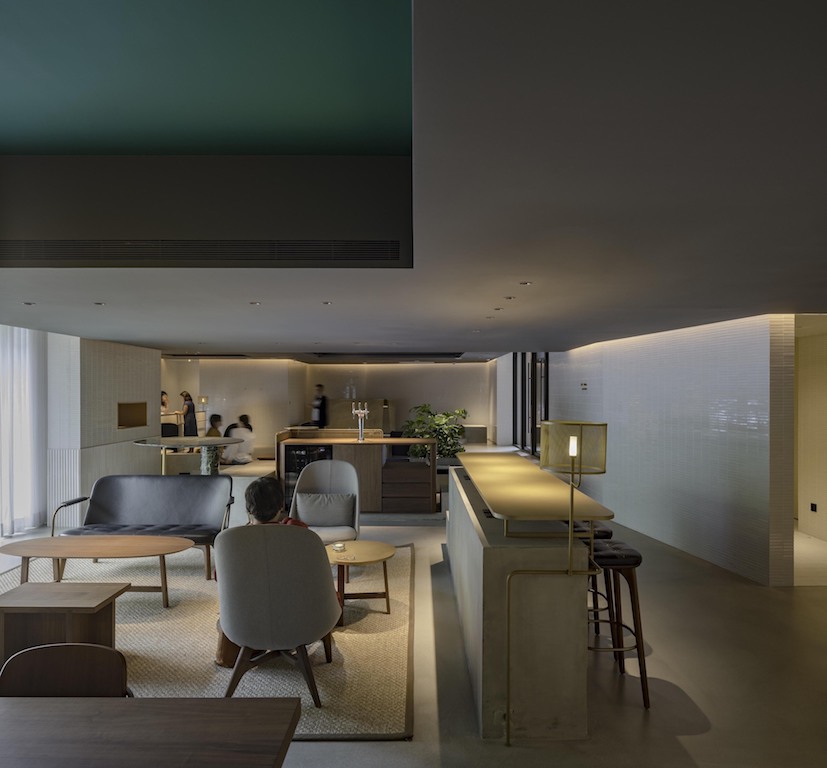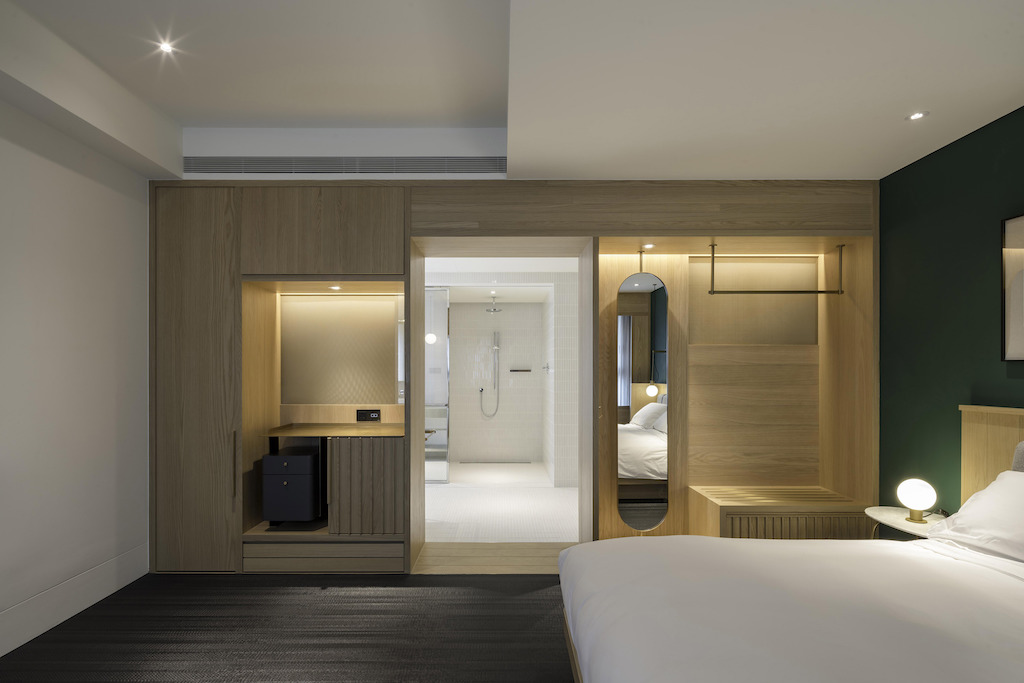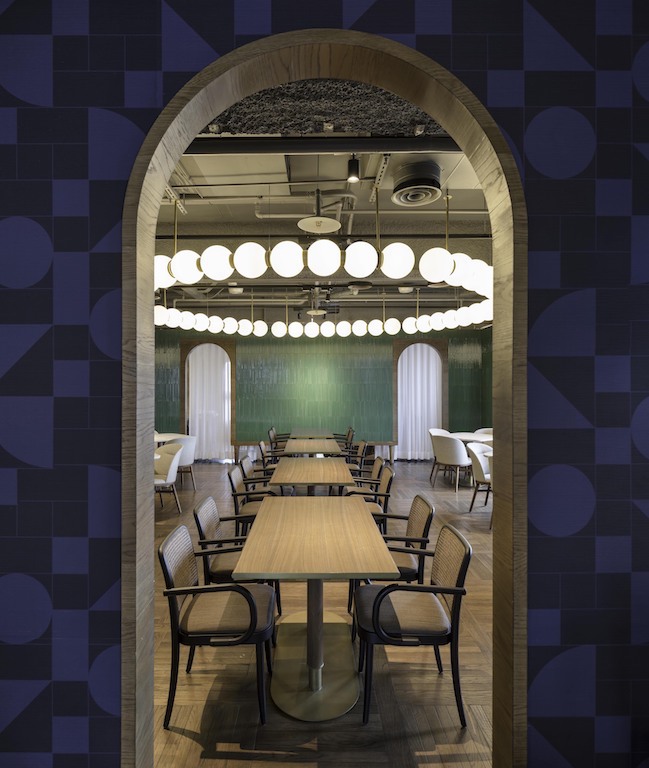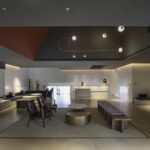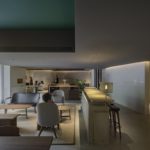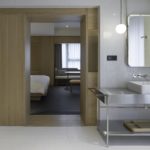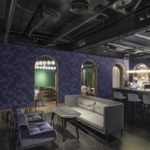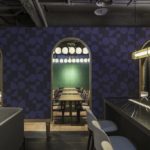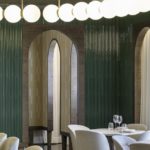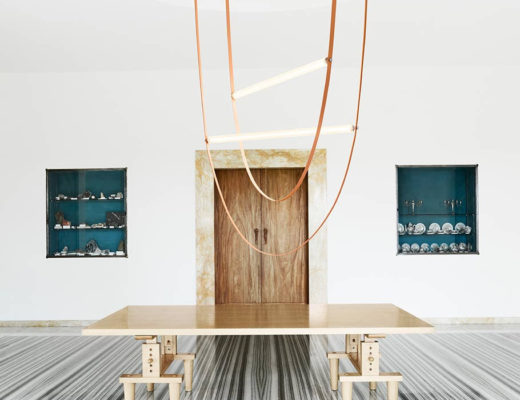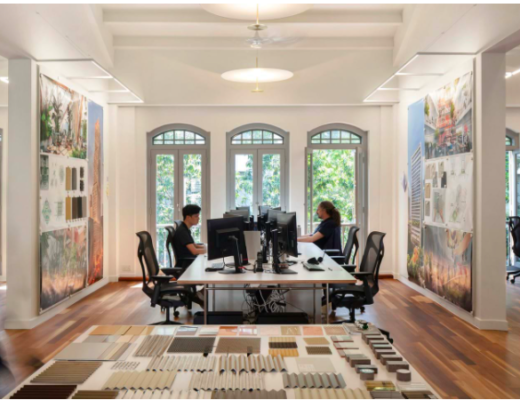Located in the Da’an district of Taipei, the Kimpton Hotel designed by Neri&Hu presents the concept of an interior sanctuary – an urban retreat that offers a sense of calm and respite from the city’s bustling streets and alleys, without losing the vibrancy and richness of its unique urban context.
Every aspect of the 8,000m² hotel reflects the guiding concept of the “inner sanctuary”. The ground floor features an intimately scaled reception lounge. The key element of the ground floor lobby design was to insert a carved mass, letting natural light inside for an interplay of light and shadow. The sculpted high-low ceiling offers different spatial experiences – a cocooned space for the lounge area and the double-height atrium at the arrival. The tiled walls with curated openings that frame the garden outside are a nod to the ubiquitous tile work often found in the alleys of Taipei, providing an understated backdrop. Intricate metalwork takes inspiration from the layers of craftsmanship found in window and façade details in the surrounding neighbourhood.
In the guestrooms, wooden insertions expressed as thresholds, sectionalise the room to create in-between spaces. Enclosed in between the thresholds, this space offers a momentary retreat – an introverted space for contemplation. Punctured openings and windows in light-coloured wooden thresholds offer optional views internally and externally to the outside.
The challenge for the design team – led by the firm’s co-founders Lyndon Neri and Rosanna Hu – behind Kimpton Da An was how to convert a residential building into a hotel due to the idiosyncrasies of the plan. To work with the many variances across the room types, bespoke wooden millwork elements were strategically tailored to each room type to create various functions catering to the guests’ needs. Windows and doors have been integrated into the wooden millwork giving access to the balcony and revealing views to the exterior.
In contrast to the guestroom experience, the restaurant is a celebration of the communal dining experience as an extension to the rich street life culture of Taipei. Different communal areas are divided by continuous enfilade walls creating a series of interconnected spaces, a common arrangement, and typology often found in Asia.
Enfilade walls are lifted with wooden legs and detached from the existing building perimeter, giving it a sense of ephemerality. The custom-designed wallpapers on the enfilade walls feature richly-coloured fluted tiles and metalwork patterns inspired by the street and alleys of Taipei.
Project associate director: Laurent Tek, Brian Lo
Design team: Akrawit Yanpaisan, Chloe Chiu, Federico Salmaso, James Beadnall, Chao Ji, Lara de Pedro, Junho Jeon, Mona He, Xiaowen Chen, Chengju Chang, Jacqueline Yam
See the full image gallery here:
Photos: Pedro Pegenaute
You might also like:
Asia’s first Ace Hotel designed by Kengo Kuma and Commune Design opens in historic Kyoto building

